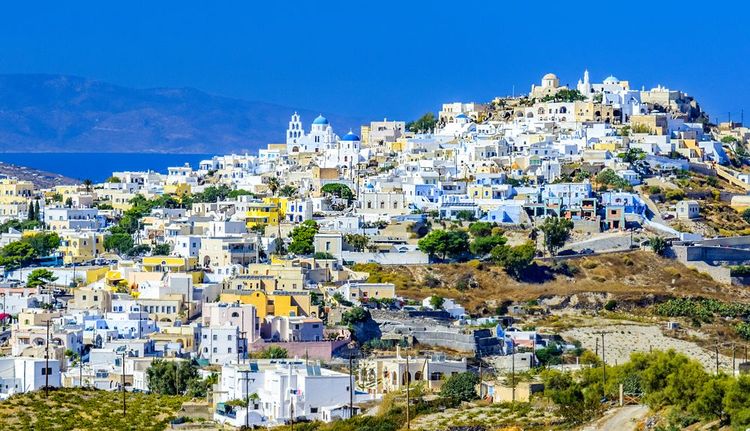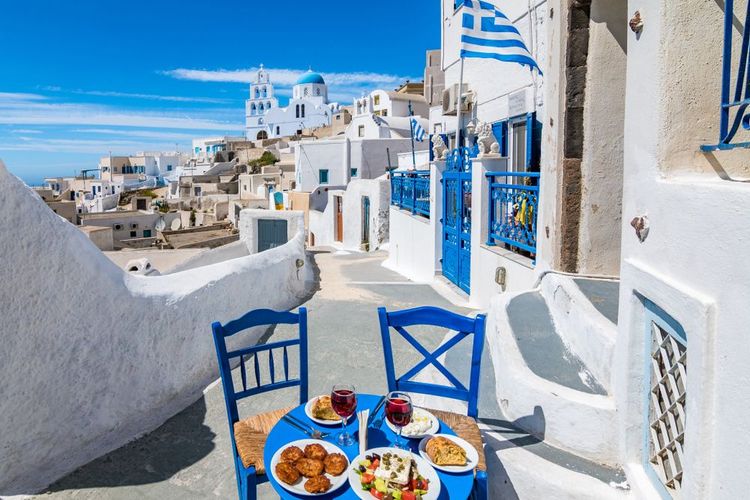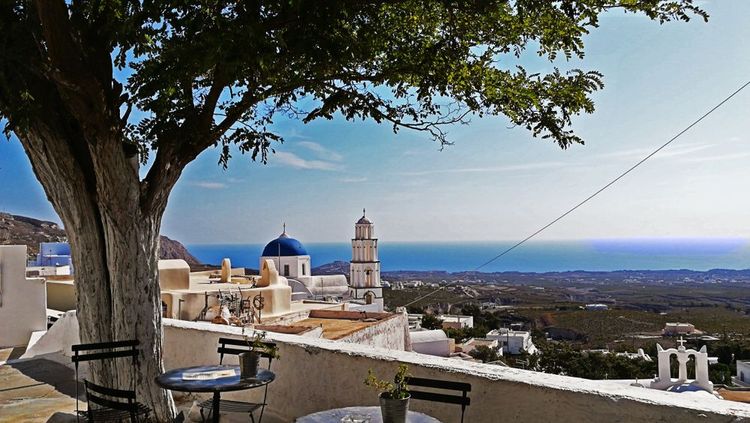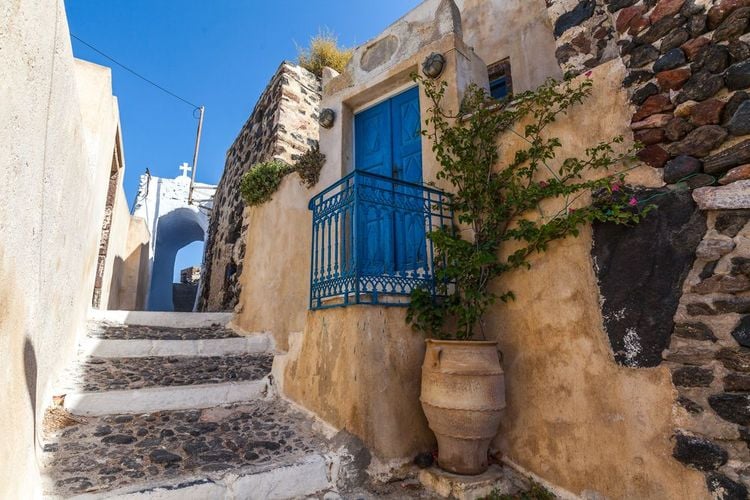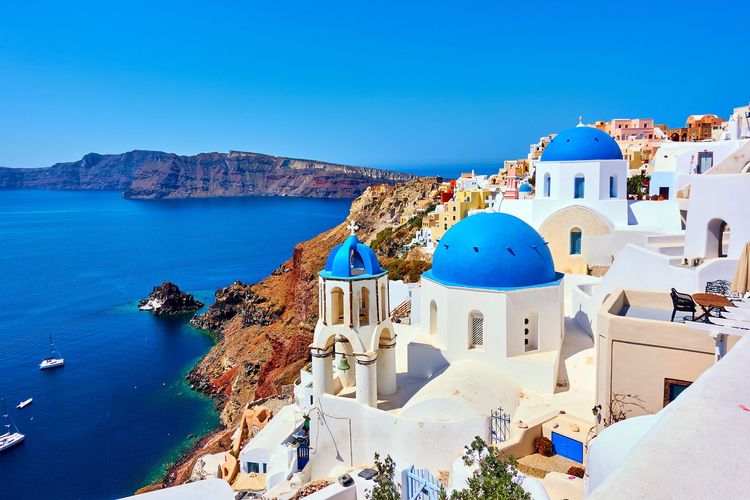Perched at 365m above sea level, it doesn't take long to realise the strategic importance of Pyrgos: from the top of the hill, you can see almost the entire island and its superb Caldera, blocked only by the heights of Profitis Ilias: the summit of neighbouring Santorini rises to 567m above sea level.
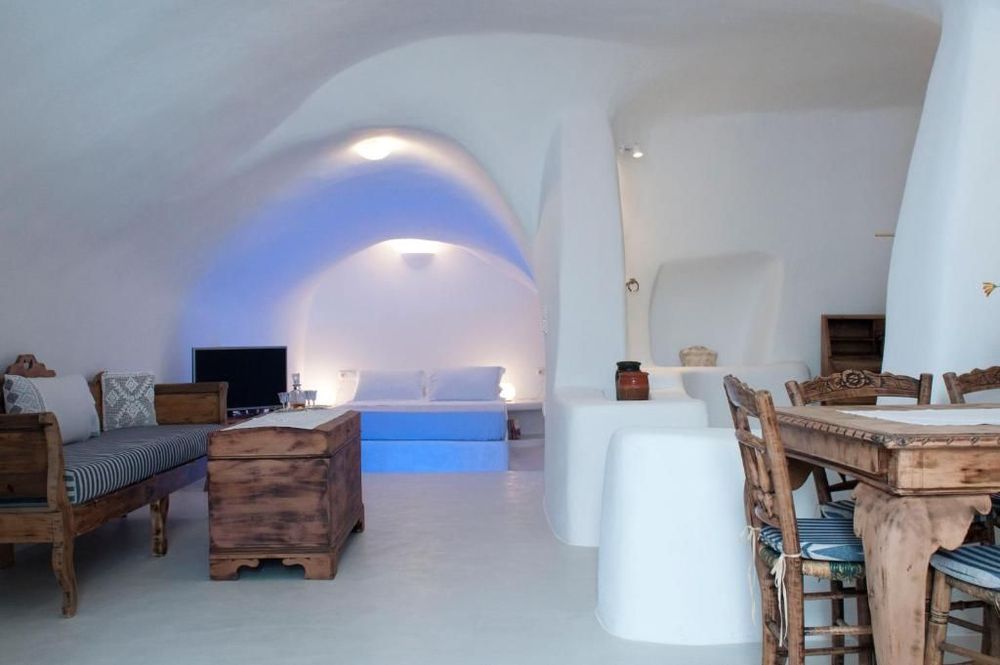 Santorini
Santorini
